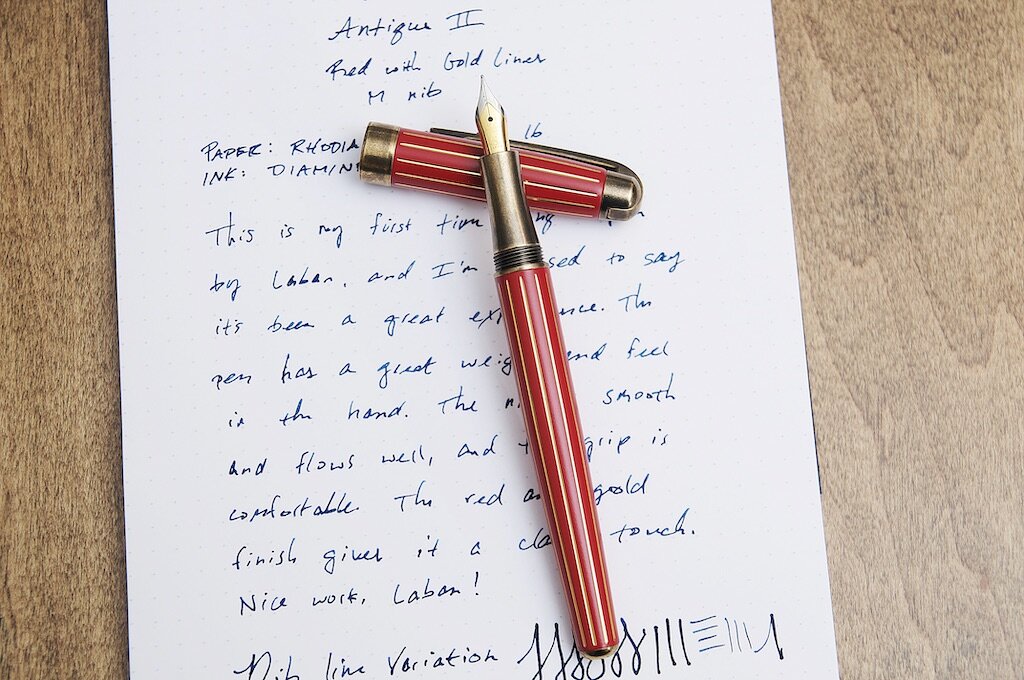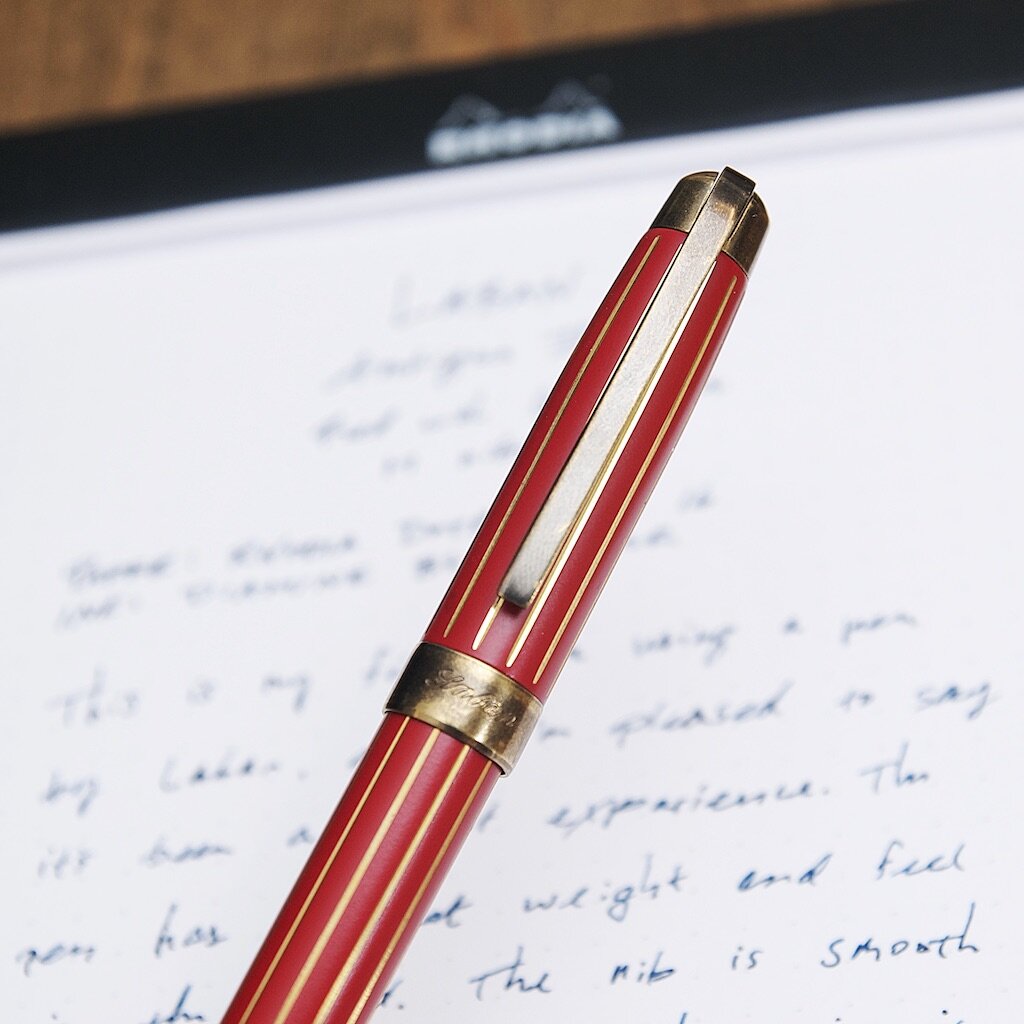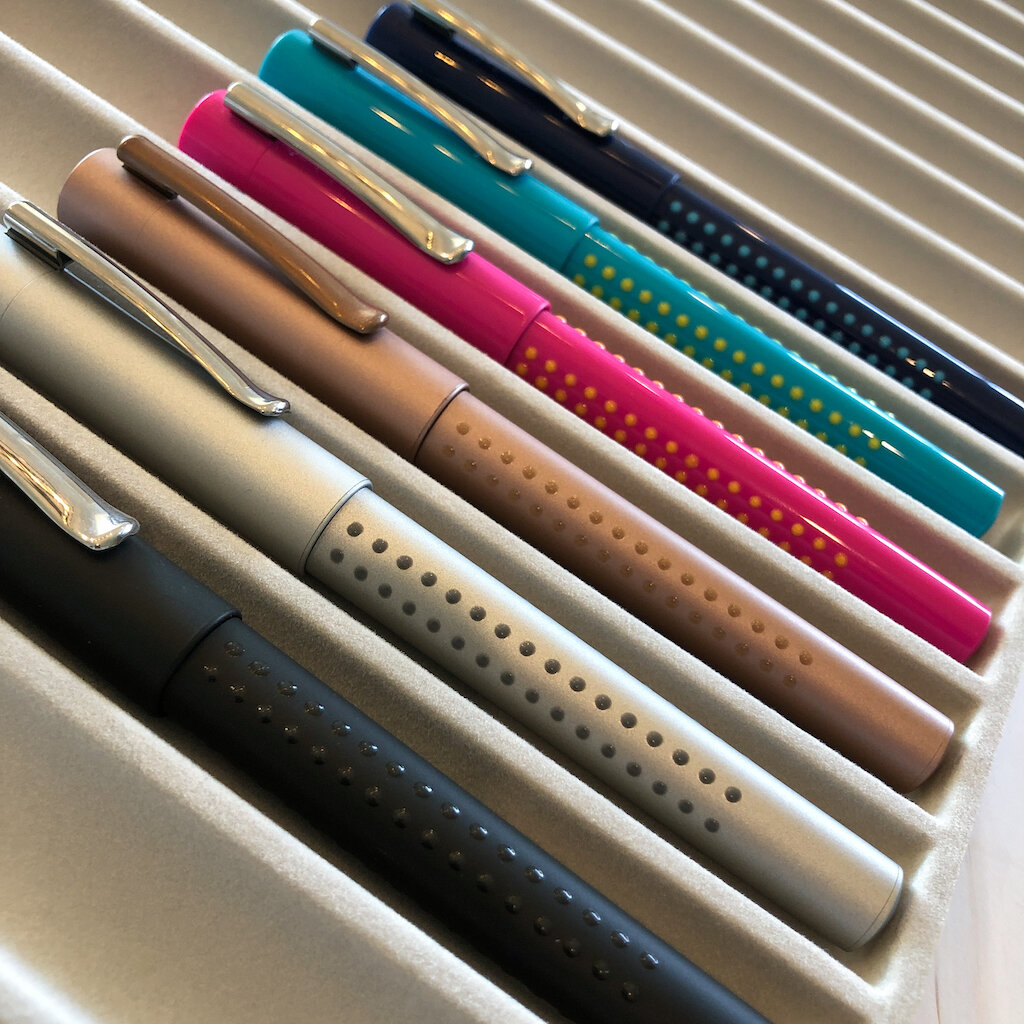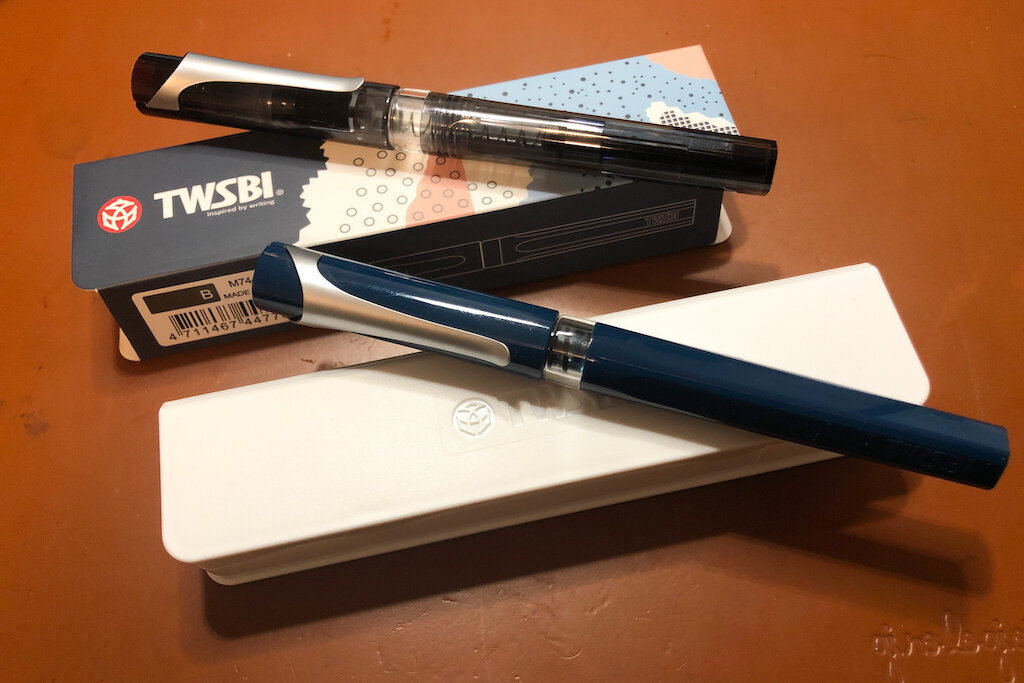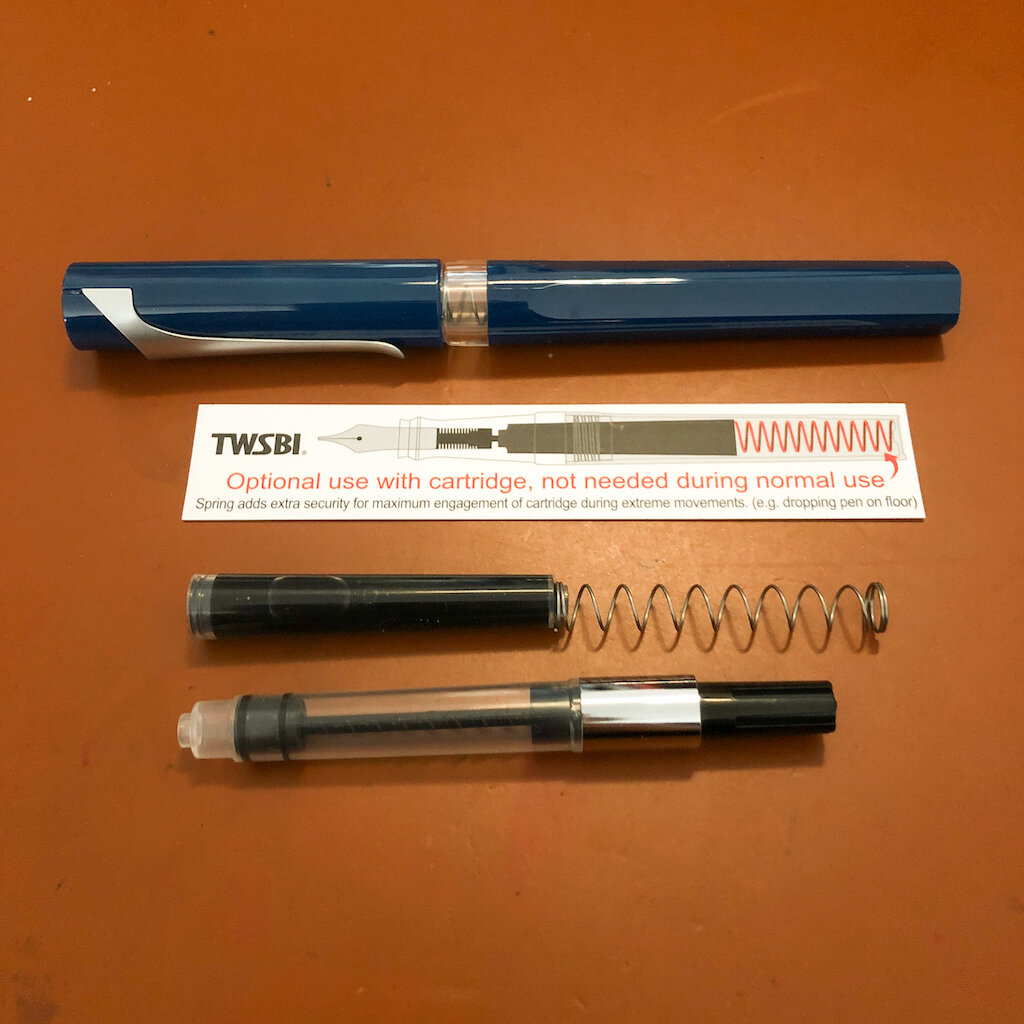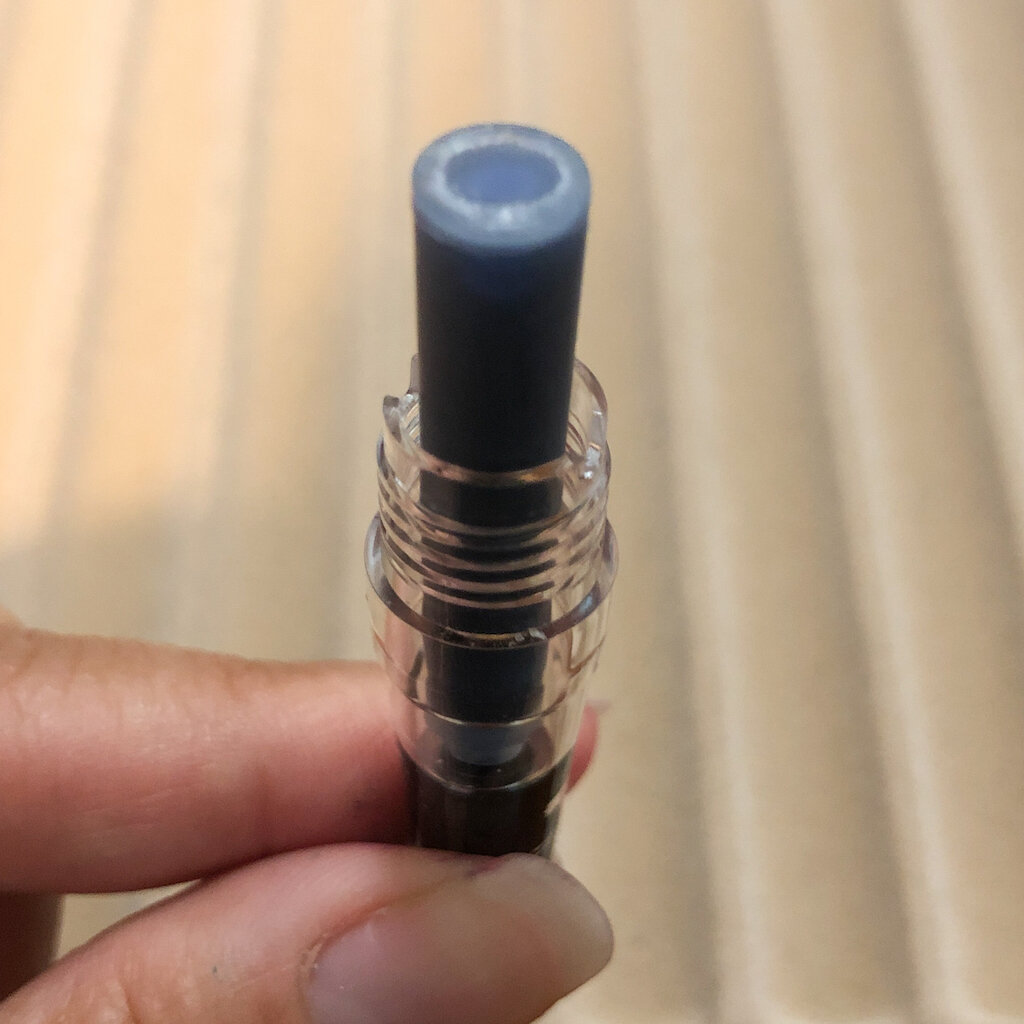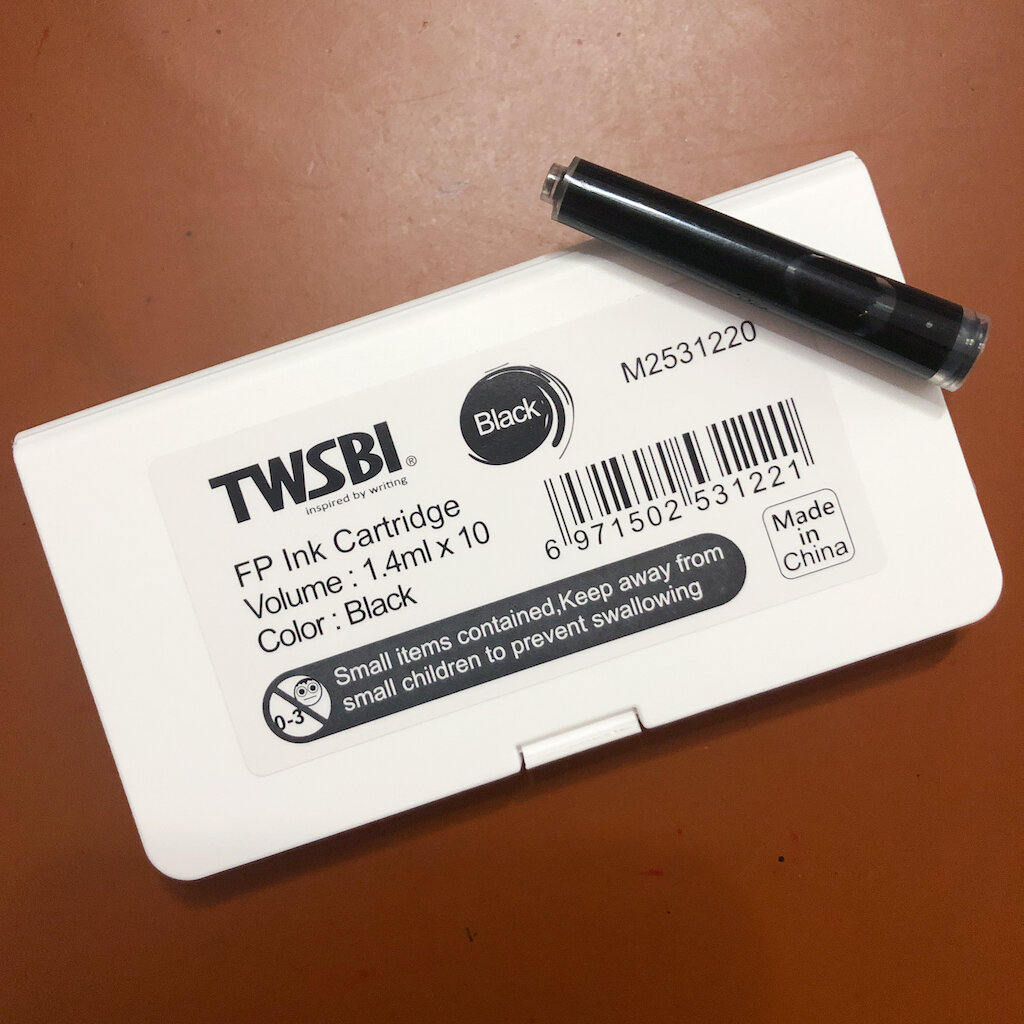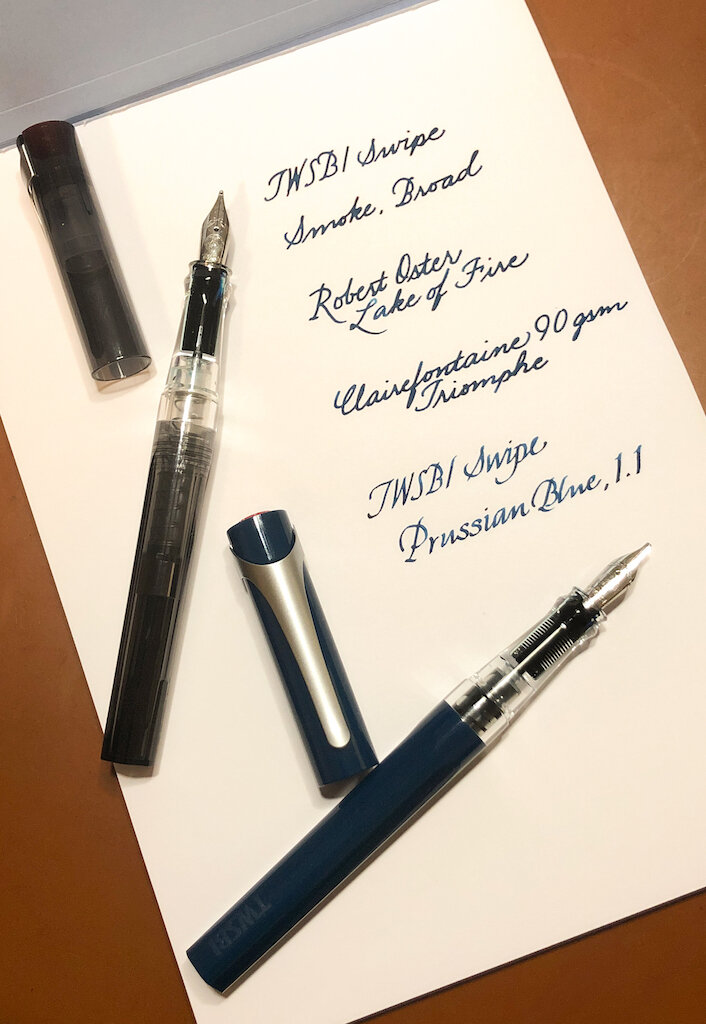(Jeff Abbott is a regular contributor at The Pen Addict. You can find more from Jeff online at Draft Evolution and Twitter.)
In a long line of "new to me" pens after the past few months, the Laban Antique II in red with gold lines is the latest to cross my desk. This classy vintage model has just the right amount of distressed character to grab your eye without being over the top or feeling out of place.
Having never used a Laban before, it's interesting to see how the brand defines itself through this individual product. It's easy to see that they appreciate good design, but they also want to bring back some sense of nostalgia by including vintage-looking accents and color schemes. It's not a complicated design, but it's just enough to hold the entire aesthetic together. The thin gold lines against the red body and cap are striking without being too bold. And don't let the "gold" adjective fool you; these colors are more akin to aged brass than shiny gold. Paired with the red, the dusty brass color is perfect.
The grip section features the same material as the cap band, clip, finial, and end of the pen. It all ties together perfectly and supports the simple concept. The nib is the only new and shiny part of this pen, but they've even chosen to use a two-tone gold and silver steel nib to compliment the red/brass color scheme. In all, Laban have done a great job with the aesthetics of this pen.
Moving on to the build quality and materials, this pen has a good amount of weight. It's not specified in the marketing materials, but I'd guess that the pen is made of brass underneath the surface. At 43 grams, it's a comfortable weight that you notice without being too much to cause fatigue after a few lines. For me, the weight of the pen without the cap is perfect for writing, but you can also post the cap for some additional balance.
I'm not sure what kind of material is used for the exterior of the pen (the red material), but it's definitely tough and not prone to scratching. I'd guess it's some sort of enamel coating, which will do well when packed in bags, pockets, purses, and even stowed next to other pens. Based on how this pen feels, it should last for quite a while assuming normal use.
The clip, finial, band, grip section, and butt of the pen all use the same brass-like metal with the same finish. It's a weathered brass look that matches perfectly with the red and gold color scheme.
The grip section has a nice shape that is comfortable to hold. Even though it's smooth, it has a microscopic texture that provides plenty of gripping power for your fingers.
The clip is strong, but still easy to use. It has no problem holding on to whatever you clip it to. I haven't been able to shake it loose with normal bag use.
Overall, this pen has the perfect weight and materials to make it feel like a luxury item.
Now, moving on to the real question at hand: How does it write? Since I'm new to Laban, I had zero expectations for how the nib would perform. I'm not sure who made the nib, as it's stamped with "Laban Iridium Germany." My assumption is that this is a Schmidt or Bock nib branded under Laban, but I have no clue if that's accurate. The nib is steel and features a smooth iridium point. The medium model that I have produces a bold, smooth line and didn't require any adjustments out of the box.
In terms of flow, it is a bit on the wet side, but not so much as to cause any issues with most papers. The extra flow definitely adds to the buttery smooth feel of the nib while writing. It really is a pleasant experience, and I hope the smaller nibs perform similarly.
You receive a standard international cartridge converter with the pen, which is a nice touch. They also include a small bookmark in the packaging. They don't include any ink cartridges, though.
Goldspot sells this pen for $88. This price point is notoriously difficult and uncomfortable because there is so much to offer both below and above the price of this pen. Can I recommend it at this price? Not really; it doesn't offer anything that other pens excel at in the sub-$50 range, and if you can spend a little more, your options explode at the $100-120 range.
That being said, this is a solid pen. It might be a tad over-priced for value received when compared to other brands, but not by much. It performs well, looks fantastic, and feels great. If the aesthetic reaches out to you, or if you think this would make a good gift for someone in your life, the Laban Antique II won't let you down. It just doesn't provide the best bang-to-buck ratio.
(Goldspot provided this product at no charge to The Pen Addict for review purposes.)
Enjoy reading The Pen Addict? Then consider becoming a member to receive additional weekly content, giveaways, and discounts in The Pen Addict shop. Plus, you support me and the site directly, for which I am very grateful.
Membership starts at just $5/month, with a discounted annual option available. To find out more about membership click here and join us!


